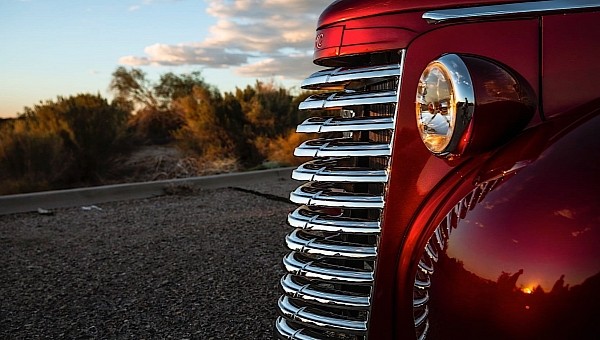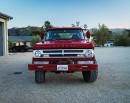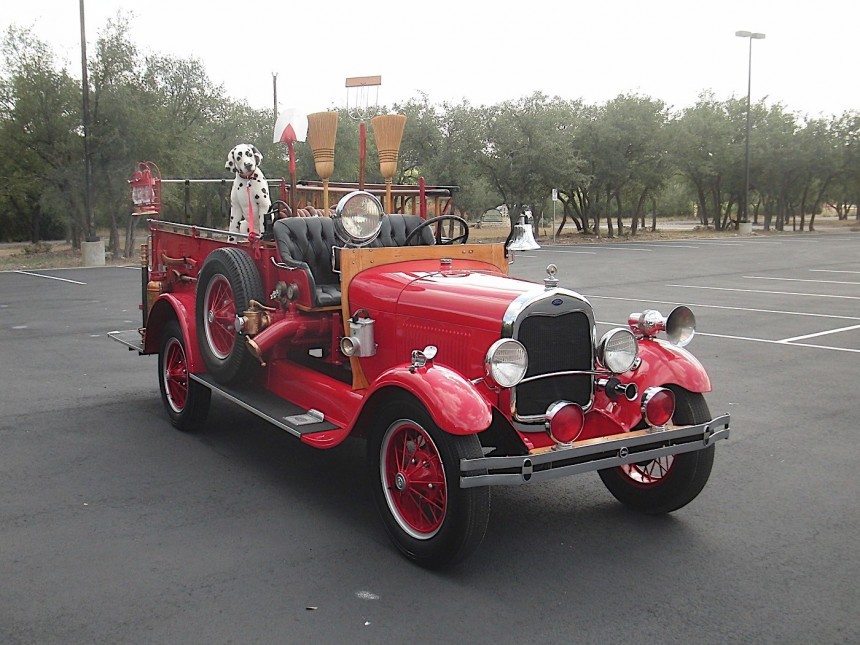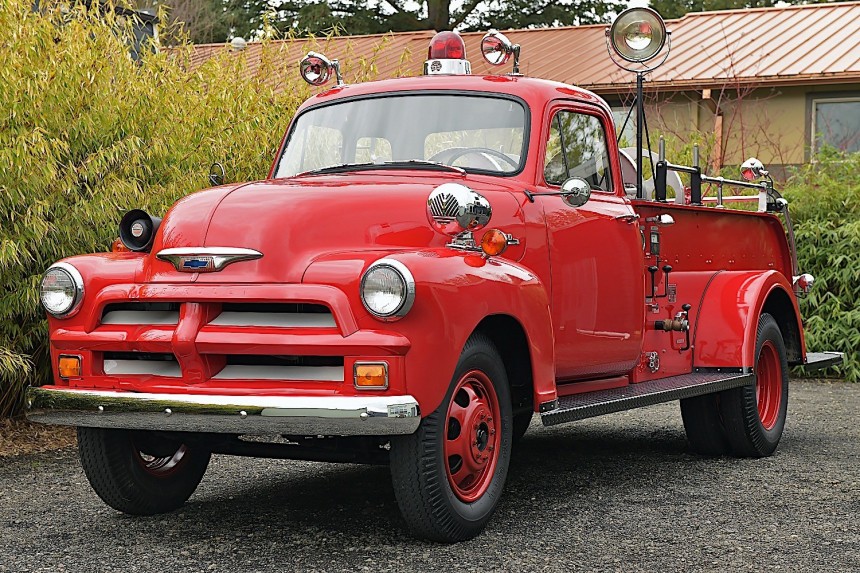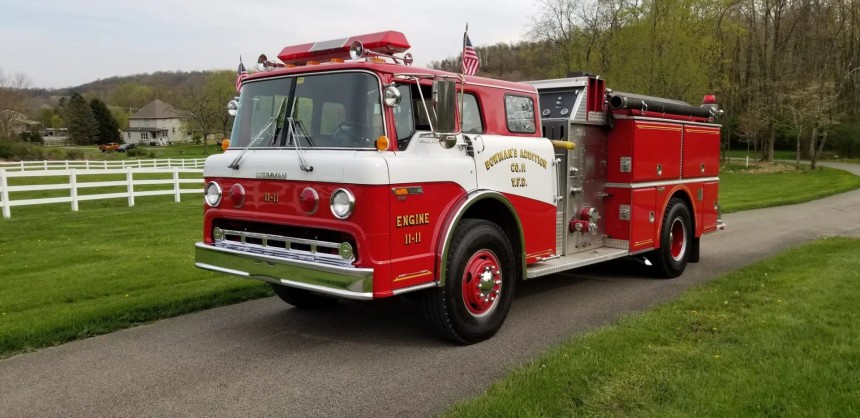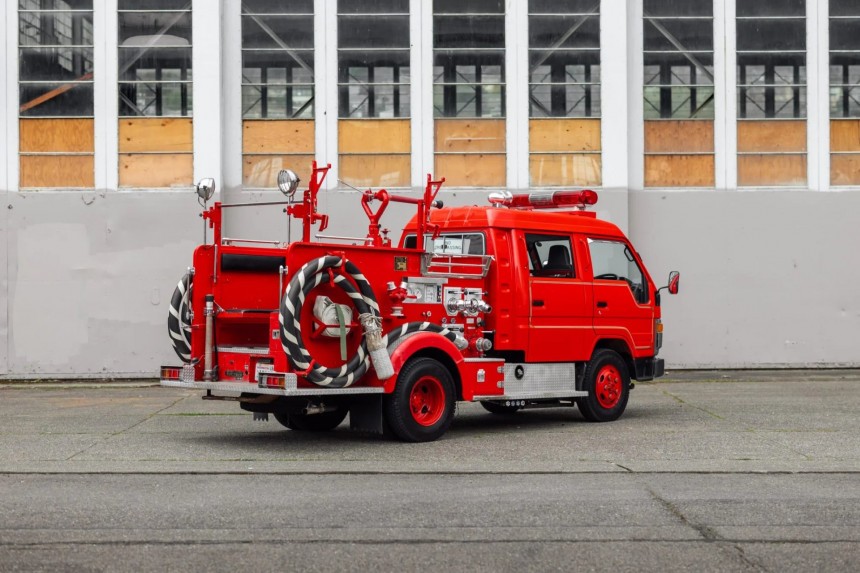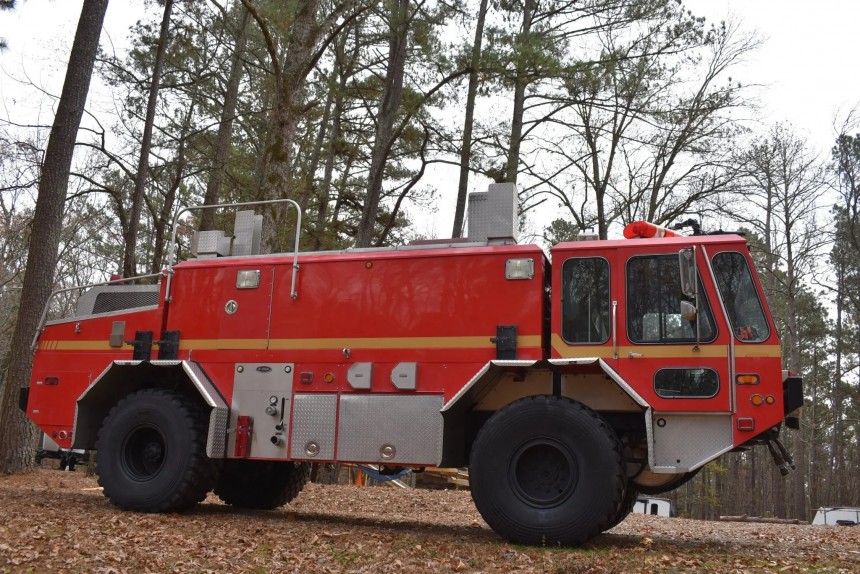The lights, sirens, and cascades of water, all of them going hand in hand with any modern-day fire truck, have a tendency to hide the real role of this type of vehicle: that would be not fighting fire per se, but saving lives and property in doing so, at times no matter the cost. For both kids and grown-ups, the fuss a fire truck creates as it races towards a fire is thrilling beyond belief, outclassing the vehicles of equally-important emergency services, the ambulances and the police cars, that usually accompany them to the scene of a crisis.
Today, Fire trucks are a common sight in any self-respecting city and pretty much everywhere, but they had to start somewhere. As was to be expected, motorized firefighting vehicles didn't come to be until the truck itself was invented. Yet, some of the features they present today have been around for much longer than that, dating back to times when people didn't even think about a thing such as an engine as being possible.
The very early fire engines (yes, fire trucks are called that too in some places) were in fact nothing more than water pumps on wheels. They were intended to come to the aid of the real firefighters from back in the day, the so-called bucket brigades. The name is simple and self-explanatory, as it describes people fighting fires by using nothing more than buckets filled with water.
Back in the 1700s, British-built pumps started being used to put out fires all across Europe, as well as over in the U.S., and that kind of spelled the end of the bucket brigades - not all of a sudden, but gradually.
Water pumps were more effective than buckets, of course, but there was one problem: they had to be transported to the sight of a fire. The first means of propulsion for these pumps, whether they were hand- or steam-powered, consisted of human beings pulling at the thing to get it to where it was needed.
Being carried around by people, the apparatus had little room to also carry personnel, and also moved very slowly. Moreover, when it arrived at the scene of the disaster, firefighters who pushed and pulled at it were often way too tired to do anything else than rest, let alone, say, actually fighting the fire. Luckily, in most cases, the flames died out on their own, at times before help even got there, so there was little left for them to do anyway.
Around the mid-1800s, the introduction of the paid, almost professional firefighters, made room for horses to be put to use and pull those nasty fire pumps. This improved the response time of the fire brigades, but still didn't solve the problem of transporting the firefighters themselves to where they were needed. Back then, and more often than not, people literally ran to the fires on foot and, despite the fact that the pump was already there, now being drawn by horses and all, they still had some resting to do before getting to the actual job. The problem was soon solved, though, with the introduction of running boards and backsteps on the wagons carrying the pumps.
Life became a lot harder for horses, though, with the continuing development of firefighting technologies. Aside from them having to carry people too now, upgrades to the pumps themselves came with an increase in weight. That meant horses were turning into means of locomotion just as ineffective as humans were before them. Often, after just half a mile or so, the travel speed of horse-drawn pumps would decrease dramatically, and so would the response time.
This called for a new means of propelling pumps: engines. The first self-propelled, steam-powered fire engine came to be in the U.S. in 1841, and it was built in New York. Strangely enough, it didn't catch on, mostly because firefighters considered such a means of propulsion both dangerous and unreliable. As a result, it would take tens of years before the steam-powered fire engines really took off.
The reign of steam power didn't last long. Despite the fact that steam-powered fire engines were still in use, here and there, up until the early 1920s, motorized fire trucks became more and more common around 1910. By 1913, a Cincinnati-based company called Ahrens-Fox Manufacturing was the leading group when it came to transforming horse-drawn or steam-powered engines into something that could properly be called a fire truck. In 1911, Mack Trucks entered the business as well, slowly becoming the most famous manufacturer in this field.
The increasing size of the buildings being erected in cities in the 1930s called for new ways for firefighters to reach the upper floors. Even if the concept of aerials, as ladders were called, had been around since the late 19th century, it was during these years that the fire ladder was taken to the next level. The thing was being installed directly onto the trucks. In time, the development of the turntable ladder made it possible for firefighters to reach heights of up to 150 feet (46 m).
Fire trucks received something called the aerial work platform in the years following World War II. This is nothing more than a bucket attached to a bending arm, and installed on a fire truck. These so-called cherry pickers allow firefighters to position the mechanical arm into unreachable corners of any building.
Towards the 1960s, the modern-day fire truck, as we know it today, was defined. It was then that these machines started being fitted with modern water pumps, ladders, and cherry pickers. The introduction of the enclosed seats for the crew being transported to the location of a fire came as a very important development.
From there, the modern-day fire truck got specialized, so that it can perform different tasks today, depending on the type of incident it responds to. Generally, they can be classified into three large categories: pumpers, turntable ladders, and specialized fire trucks.
The pumpers (a.k.a. triple-combination pumpers) are the most common apparatus used by fire departments. They are defined as being a type of vehicle permanently fitted with a fire pump, water tank, and hose body, and are also known as wagons or engines. The pumpers are used to provide personnel with the tools required for the initial attack on the fire.
The turntable ladder, commonly known as ladder, is the specialized truck used to access fires occurring at high building levels. It helps provide access and egress for both firefighters and casualties, as well as providing a higher water point, in conjunction with a long hose. Most of the ladder trucks are pumpers as well. The ones fitted with a bucket on top of the hydraulic arm are called town ladders.
The tiller, or tractor-drawn aerial, is a specialized ladder truck, with the ladder mounted on a semi-trailer. It is ideal to respond to emergencies occurring on narrow streets, because it has separate steering for the front and rear wheels.
The hydraulic platform (a.k.a. articulating booms, snorkels, platform truck, or Bronto) is a type of ladder truck that in some cases comes equipped with an articulated hydraulic arm. This allows for the arm to extend up and over some obstacles like rooftops, allowing access to otherwise hard-to-reach places.
Water tenders are large water tanks on wheels, used to transport water to the scene of the fire. Because they are ideal for use where hydrants are not usually found at every street corner, they are mostly deployed in rural areas. Besides helping with fires, they are also used to draw in water from floods, thanks to the pumps they come equipped with.
The 4x4 of fire trucks (not trucks per se, though) are wildland fire engines. They are used to fight fires in mountains and hills, where regular fire trucks are unable to go.
Crash tenders are fire trucks intended for fighting aircraft fires. They are, perhaps, the most complete type of fire truck out there. They come packed with firefighting chemicals, and they can move on tarmac and off tarmac with a decent amount of speed.
But all of the above machines are not the only ones of their kind. Fire truck-based vehicles are meant to rescue people from car crashes, they are aimed at transporting hazardous materials, are sometimes used as command and control stations, and, in some cases, even put to hard work to rescue cats out of trees. And all you hardcore tifosi (aka soccer fans) out there do know yet another use of the fire truck: dispersing crowds.
As said, the fascination with these machines and the brave souls who operate them is undying. It seems to have grown even more so after the dramatic events which unfolded in New York and Washington on September 11, 2001.
Back then, not only did fire crews in the two cities prove their valor by going in against overwhelming odds, but also laid down their lives doing their jobs. In the Big Apple alone, the FDNY lost 343 firefighters because of the collapse of the World Trade Center buildings and smoke inhalation. With them went almost 100 of the city's fire trucks, completely destroyed, and an additional 130 partly damaged.
Sadly, fire events will continue to take place, and that means more drama is just waiting to unfold. Here's to hoping the advancements made in technology will only help reduce the number of casualties.
One way that can happen is by using robots and drones to go into areas usually visited by humans today. The scenario would be pretty simple: while firefighters use their trucks to fight the blaze from afar, drones and robots could search the interior and lend assistance to those in need.
The very early fire engines (yes, fire trucks are called that too in some places) were in fact nothing more than water pumps on wheels. They were intended to come to the aid of the real firefighters from back in the day, the so-called bucket brigades. The name is simple and self-explanatory, as it describes people fighting fires by using nothing more than buckets filled with water.
Back in the 1700s, British-built pumps started being used to put out fires all across Europe, as well as over in the U.S., and that kind of spelled the end of the bucket brigades - not all of a sudden, but gradually.
Water pumps were more effective than buckets, of course, but there was one problem: they had to be transported to the sight of a fire. The first means of propulsion for these pumps, whether they were hand- or steam-powered, consisted of human beings pulling at the thing to get it to where it was needed.
Around the mid-1800s, the introduction of the paid, almost professional firefighters, made room for horses to be put to use and pull those nasty fire pumps. This improved the response time of the fire brigades, but still didn't solve the problem of transporting the firefighters themselves to where they were needed. Back then, and more often than not, people literally ran to the fires on foot and, despite the fact that the pump was already there, now being drawn by horses and all, they still had some resting to do before getting to the actual job. The problem was soon solved, though, with the introduction of running boards and backsteps on the wagons carrying the pumps.
Life became a lot harder for horses, though, with the continuing development of firefighting technologies. Aside from them having to carry people too now, upgrades to the pumps themselves came with an increase in weight. That meant horses were turning into means of locomotion just as ineffective as humans were before them. Often, after just half a mile or so, the travel speed of horse-drawn pumps would decrease dramatically, and so would the response time.
This called for a new means of propelling pumps: engines. The first self-propelled, steam-powered fire engine came to be in the U.S. in 1841, and it was built in New York. Strangely enough, it didn't catch on, mostly because firefighters considered such a means of propulsion both dangerous and unreliable. As a result, it would take tens of years before the steam-powered fire engines really took off.
The increasing size of the buildings being erected in cities in the 1930s called for new ways for firefighters to reach the upper floors. Even if the concept of aerials, as ladders were called, had been around since the late 19th century, it was during these years that the fire ladder was taken to the next level. The thing was being installed directly onto the trucks. In time, the development of the turntable ladder made it possible for firefighters to reach heights of up to 150 feet (46 m).
Fire trucks received something called the aerial work platform in the years following World War II. This is nothing more than a bucket attached to a bending arm, and installed on a fire truck. These so-called cherry pickers allow firefighters to position the mechanical arm into unreachable corners of any building.
Towards the 1960s, the modern-day fire truck, as we know it today, was defined. It was then that these machines started being fitted with modern water pumps, ladders, and cherry pickers. The introduction of the enclosed seats for the crew being transported to the location of a fire came as a very important development.
The pumpers (a.k.a. triple-combination pumpers) are the most common apparatus used by fire departments. They are defined as being a type of vehicle permanently fitted with a fire pump, water tank, and hose body, and are also known as wagons or engines. The pumpers are used to provide personnel with the tools required for the initial attack on the fire.
The turntable ladder, commonly known as ladder, is the specialized truck used to access fires occurring at high building levels. It helps provide access and egress for both firefighters and casualties, as well as providing a higher water point, in conjunction with a long hose. Most of the ladder trucks are pumpers as well. The ones fitted with a bucket on top of the hydraulic arm are called town ladders.
The tiller, or tractor-drawn aerial, is a specialized ladder truck, with the ladder mounted on a semi-trailer. It is ideal to respond to emergencies occurring on narrow streets, because it has separate steering for the front and rear wheels.
Water tenders are large water tanks on wheels, used to transport water to the scene of the fire. Because they are ideal for use where hydrants are not usually found at every street corner, they are mostly deployed in rural areas. Besides helping with fires, they are also used to draw in water from floods, thanks to the pumps they come equipped with.
The 4x4 of fire trucks (not trucks per se, though) are wildland fire engines. They are used to fight fires in mountains and hills, where regular fire trucks are unable to go.
Crash tenders are fire trucks intended for fighting aircraft fires. They are, perhaps, the most complete type of fire truck out there. They come packed with firefighting chemicals, and they can move on tarmac and off tarmac with a decent amount of speed.
As said, the fascination with these machines and the brave souls who operate them is undying. It seems to have grown even more so after the dramatic events which unfolded in New York and Washington on September 11, 2001.
Back then, not only did fire crews in the two cities prove their valor by going in against overwhelming odds, but also laid down their lives doing their jobs. In the Big Apple alone, the FDNY lost 343 firefighters because of the collapse of the World Trade Center buildings and smoke inhalation. With them went almost 100 of the city's fire trucks, completely destroyed, and an additional 130 partly damaged.
Sadly, fire events will continue to take place, and that means more drama is just waiting to unfold. Here's to hoping the advancements made in technology will only help reduce the number of casualties.
One way that can happen is by using robots and drones to go into areas usually visited by humans today. The scenario would be pretty simple: while firefighters use their trucks to fight the blaze from afar, drones and robots could search the interior and lend assistance to those in need.
